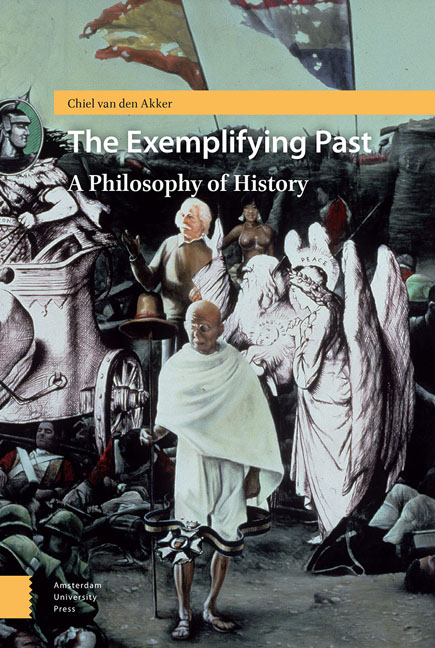1 - Introduction: Retroaction, Indeterminacy, and Seeing-in
Published online by Cambridge University Press: 29 January 2021
Summary
Seeing-in
This book argues that to see the past in a certain light is to have the past exemplify the spirit of its age. The latter term may seem antiquated and sound too Hegelian to some tastes, but the reason to use it here is that it captures the scope of the argument. (Rest assured, the book most of the time makes use of a contemporary idiom instead of this ‘ghostly’ entity.) The book wants to make sense of the claim that the spirit of an age retroactively becomes concrete in what has actually been found to have existed. Take the widely known example used in the preface, and think of how the spirit of modern man became concrete in the behaviour, attitudes, and concerns of the Italians studied by Jacob Burckhardt, in how they treated the states of affairs objectively, or how Francesco Sforza personally earned the credit of his soldiers. Think also of their calculated self-interest, the Venetian statistical accounts of its resources, their modern desire for fame and sense of moral responsibility, their discovery of the aesthetics of the outer world, and their depiction of chivalry as ludicrous. Such behaviour, attitudes, and desires exemplify the birth of modern man. It is something that Burckhardt as an historian sees in the past. Several other and more recent examples of this special and defining feature of historical understanding will be discussed in this book.
The emergence of modern man in fourteenth and fifteenth-century Italy can be said to be Burckhardt's view of or thesis on the past. In this book my interest is not only in the nature of these views; I am equally interested in how we retroactively see something in the past which was not there to see at first, but which has become concrete in what has been found to have existed. This claim suggests that the past is indeterminate and mutable, open and subject to change. It is one of the claims that are argued in Chapter 3 of this book. Here I start with the very idea of the indeterminate past and the philosophers who put this topic on the agenda of the philosophy of history.
- Type
- Chapter
- Information
- The Exemplifying PastA Philosophy of History, pp. 13 - 20Publisher: Amsterdam University PressPrint publication year: 2018



